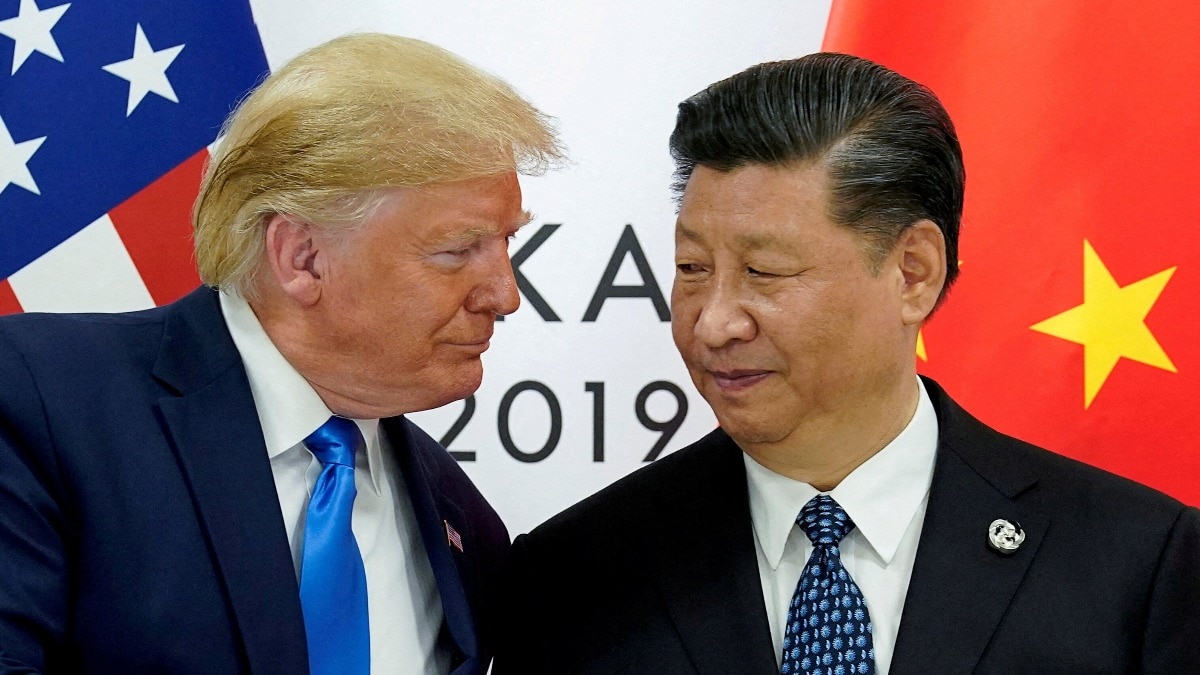 |
|
The article details President Trump's decision to extend the U.S.-China tariff truce for 90 days, a move aimed at preventing a significant increase in duties that could negatively impact American retailers during the crucial holiday shopping season. This decision, however, was juxtaposed with Trump's heightened criticism of India's trade practices, suggesting a strategic approach where India serves as a foil to emphasize his perceived toughness on trade, even as he softens his stance towards Beijing. The extension of the tariff truce implies a willingness to negotiate and potentially reach a trade agreement with China, despite the ongoing tensions and disagreements between the two economic superpowers. The delay, as the article points out, keeps U.S. tariffs on Chinese imports at 30%, rather than escalating to 145%. Similarly, Chinese duties remained at 10% instead of rising to 125%. Without this extension, the article notes, the situation would have risked a virtual trade embargo, disrupting global supply chains and causing economic instability. The fact that Treasury Secretary Scott Bessent had previously warned that the triple-digit tariffs were unsustainable further underscores the economic rationale behind the decision to extend the truce. The article also highlights the behind-the-scenes negotiations and discussions that contributed to the extension. Talks in Geneva and Stockholm earlier in the summer laid the groundwork for the agreement, suggesting that both sides have been engaged in ongoing efforts to resolve their trade disputes. Furthermore, the article mentions that Trump demanded China quadruple its U.S. soybean purchases, indicating a specific area of contention and a potential bargaining chip in the negotiations. The willingness of Trump to meet with Xi Jinping before the year's end, contingent on continued progress in the talks, signals a commitment to reaching a mutually acceptable resolution. The article suggests the delay would reduce anxiety. Former trade officials note the move will undoubtedly lower anxiety. The lack of formal announcement, despite rhetoric, reveals the tension of negotiations.
The strategic implications of Trump's actions are multifaceted. By extending the tariff truce with China, he avoids a potential economic crisis during the holiday season and creates an opportunity for further negotiations. The use of India as a foil allows him to project an image of unwavering toughness on trade, even as he makes concessions to China. This approach could be intended to appease domestic constituencies who support a hardline stance on trade, while simultaneously pursuing a more pragmatic approach with China. The article also raises questions about the long-term sustainability of this approach. While the 90-day extension provides temporary relief, it does not resolve the underlying issues that have led to the trade disputes. Whether the two countries can reach a comprehensive agreement within this timeframe remains uncertain. The potential for further escalation remains a risk, particularly if negotiations stall or if either side perceives the other as acting in bad faith. The lack of a formal announcement, according to the article, also hints at the tentative nature of the agreement. Trump's negotiating style, characterized as going "right down to the wire," adds an element of unpredictability to the situation. His willingness to make demands, such as the increase in soybean purchases, and his reliance on personal diplomacy, as evidenced by the potential meeting with Xi Jinping, further shape the dynamics of the trade negotiations. The article also highlights the role of various individuals and organizations in shaping the trade policy landscape. Former White House trade officials, such as Kelly Ann Shaw and Ryan Majerus, provide insights into the strategic considerations behind Trump's decisions. Treasury Secretary Scott Bessent's warnings about the unsustainable nature of triple-digit tariffs underscore the economic concerns driving the policy decisions. The U.S. Trade Representative officials declined comment on the deal.
The broader context of global trade relations is essential to understanding the significance of Trump's actions. The trade disputes between the U.S. and China have had a ripple effect on the global economy, disrupting supply chains, increasing uncertainty, and dampening economic growth. The extension of the tariff truce provides a temporary respite from these disruptions, but it does not address the underlying imbalances and tensions that have fueled the trade conflicts. The article's focus on Trump's rhetoric towards India also underscores the importance of bilateral trade relations in the broader global trade landscape. India, as a rapidly growing economy, represents a significant market for U.S. goods and services. Trump's criticism of India's trade practices suggests a desire to negotiate more favorable terms of trade for the U.S., but it also risks alienating a key strategic partner in the region. In conclusion, the article provides a nuanced analysis of President Trump's decision to extend the U.S.-China tariff truce and his simultaneous criticism of India's trade practices. The move reflects a complex interplay of economic, political, and strategic considerations. While the extension provides temporary relief from escalating trade tensions, it does not resolve the underlying issues that have fueled the trade disputes. The long-term impact of Trump's actions on the global economy and on U.S. relations with China and India remains to be seen. The reliance on individuals like Bessent, Shaw, and Majerus shows how key stakeholders shaped trade decisions. The lack of official announcement after significant rhetoric shows a possible sign of tense negotiations ongoing with both sides. The article does well showing the implications on tariffs, U.S.-China relations, and possible impacts on retailers. Furthermore, the impact this could have on retailers and the anxieties associated with the global trade market are clearly described.
Source: 'I haven’t stopped there': Trump hits India on trade, then gives China a 90 day tariff break
